Great Design Plant: Red Yucca Spikes Dry Spots With Color
http://decor-ideas.org 11/13/2013 02:50 Decor Ideas
What if you could get the ability to tolerate freezing temperatures and blazing heat in a single plant? Add a few other characteristics, such as beautiful flowers, drought tolerance and low maintenance, and you've got red yucca. It has all these traits packaged into one beautiful succulent plant that has found a home throughout Southwestern landscapes. In spring coral-colored flowers are borne aloft on tall stalks atop succulent grass-like foliage. Even when red yucca is not in flower, the grass-like foliage adds great texture to the landscape.
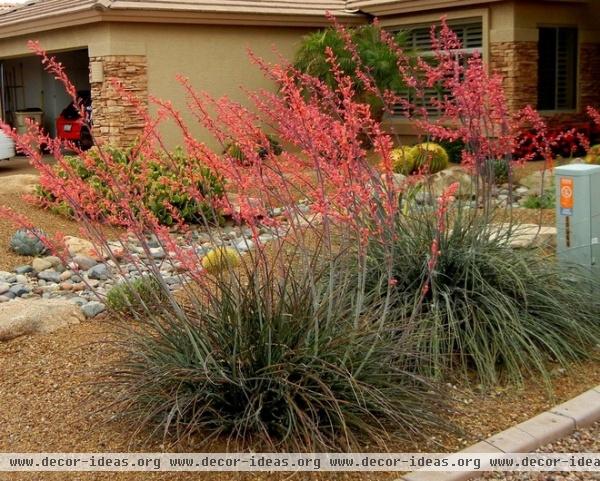
Botanical name: Hesperaloe parviflora
Common names: Red yucca, red hesperaloe
Origin: Native to Texas and northern Mexico
Where it will grow: Hardy to -20 degrees Fahrenheit (USDA zone 5; find your zone)
Water requirement: Low
Light requirement: Full sun to filtered shade
Mature size: 3 to 4 feet wide and 3 feet tall (5 feet tall when in flower)
Benefits and tolerances: Drought tolerant once established, but looks best with deep watering twice a month spring through fall; attracts hummingbirds
Seasonal interest: Flowers in spring and off and on throughout the summer
When to plant: Fall or spring
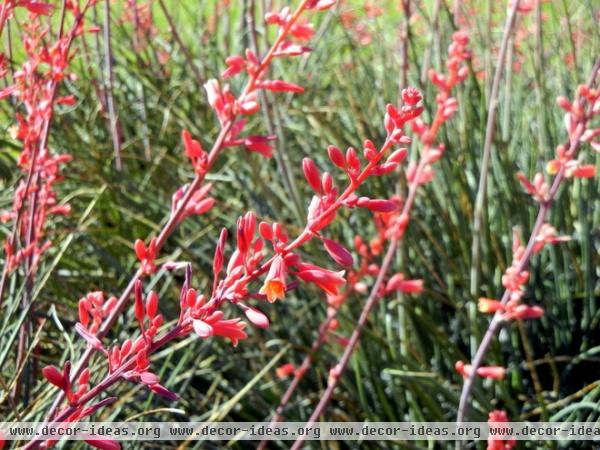
Distinguishing traits. Despite its common name, red yucca is not a yucca at all. The leaves of this succulent mimic the appearance of an ornamental grass.
Coral flowers with a yellow center appear on tall stalks beginning in spring and lasting through early summer. In cooler climates flowering can extend throughout the entire summer.
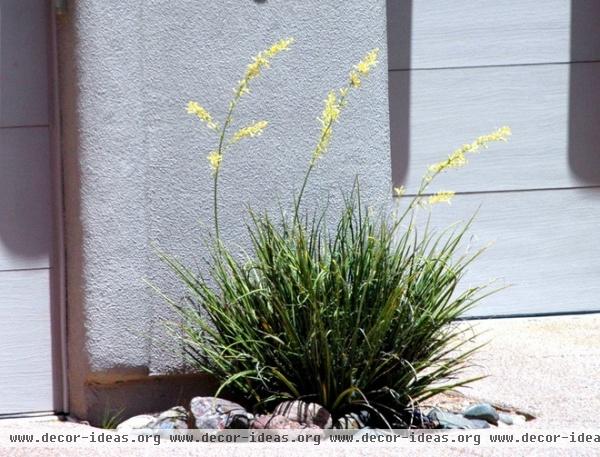
Also available in a yellow-flowered variety, red yucca can handle areas with western exposures and reflected heat. Flowering is at its best when red yucca is planted in full sun.
When not in flower, red yucca adds a welcome spiky texture to the landscape. It does best in the well-drained, slightly alkaline soil prevalent throughout the Southwest.
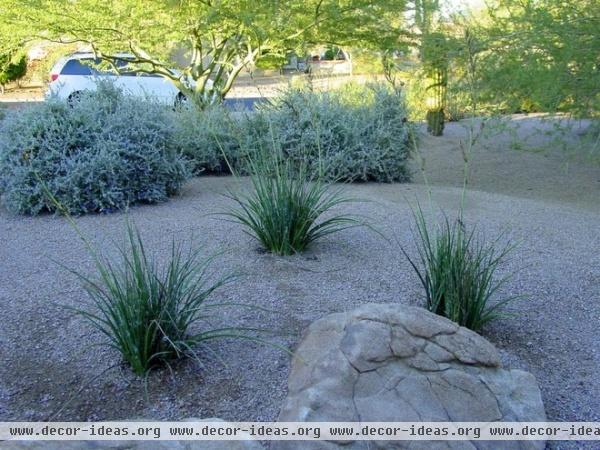
How to use it. Red yucca looks great planted in groups of three or five. Plant it near boulders, where its spiky texture will contrast with their rounded shapes. Red yucca is also great to add alongside pools, due to its low litter. It also makes a good container plant and is the perfect solution for a hot corner that receives reflected heat.
Show off the coral flowers by pairing red yucca with yellow-flowering plants, such as angelita daisy, desert marigold (Baileya multiradiata), damianita and feathery cassia (Senna artemisioides).
Shown: Red yucca, not in flower, arranged around a boulder
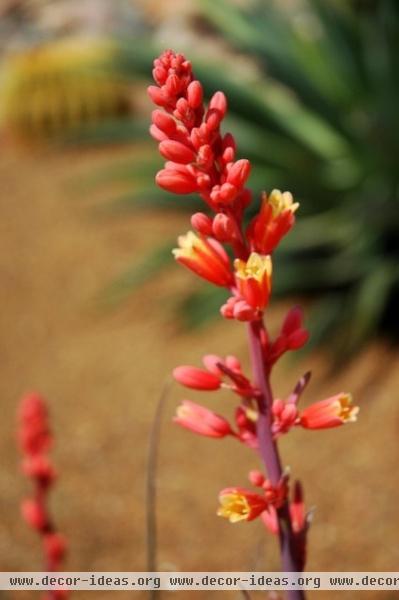
Planting notes. Plant it in full sun or filtered shade in well-drained soil. Water twice a month spring through fall. Red yucca needs very little water during winter — water once a month then in the absence of rain.
This is a truly low-maintenance plant. Prune the flowering stalks back to the base of the plant once they have dried. Divide large clumps of red yucca in spring every three to four years. Red yucca requires no fertilizer.
Shown: Close-up of the coral flowers of red yucca with their yellow centers
More: What to Do in Your Garden Now
Related Articles Recommended












